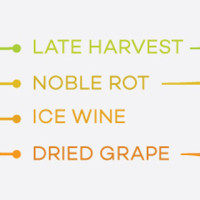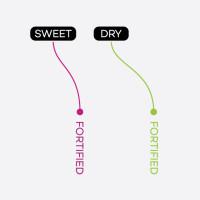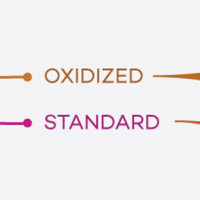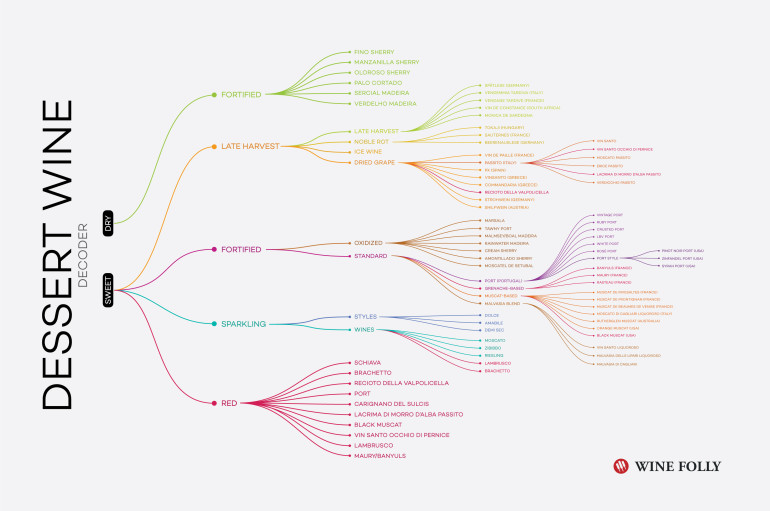There are hundreds upon hundreds of different dessert wines. Despite all this variety, there are a few basic winemaking techniques used to make dessert wine. It’s these processes that define the gamut of styles available in the realm of this type of wine.
What is dessert wine?
Dessert wines are defined by what part of the meal they are best suited to be enjoyed. Most dessert wines are sweet (as you’ll see below), but there are also some classic dessert wines made in a dry (not sweet) style.
Dessert Wine Decoder
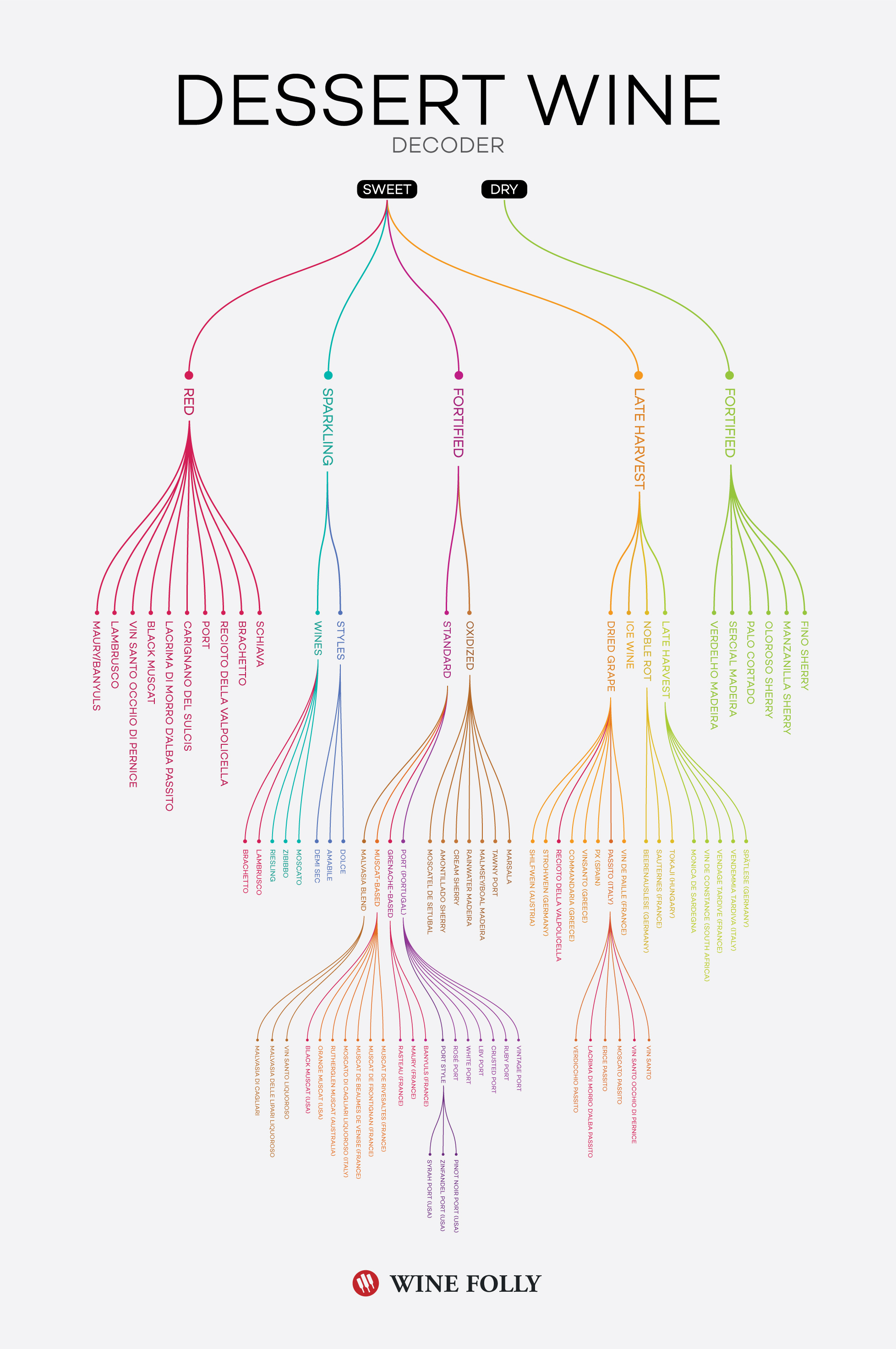
By identifying and grouping dessert wines through their winemaking methodology, you’ll be able to experience similar tasting wines, even if they’re from different regions.
The different styles of dessert wine
Late Harvest
There are many styles of late harvest wine, but the basic concept of leaving the grapes to dry out and increase in sweetness is what defines this category. Nearly every variety can be made in a late harvest style, from Chardonnay to Zinfandel, however you’ll find that there are several varieties typically preferred. Within the late harvest style category there are several winemaking techniques that result in different tasting wines:
- Late Harvest
- The basic process of late harvest is to leave the grapes on the vine and pick later in the season.
- Noble Rot
- A special kind of fungus develops on grapes in foggy regions and causes wines to increase in sweetness with saffron, honey and ginger notes.
- Dried Grape
- There are many different methods and styles of dried grape wines. This style is particularly popular in Italy where grapes are harvested and laid out on mats in special drying rooms before being pressed into wine.
- Ice Wine
- When grapes freeze on the vine and are picked and pressed while frozen only the sugars are released from the grape. This produces the sweetness in wines.
Fortified
One of the processes to make dessert wine is through fortification which means adding spirits to the wine. The spirits added are typically clear, neutral-tasting grape brandy. You’ll see the addition levels of spirits range from just a few points to about 30% of the blend. Not only does this raise the alcohol level, but it stops the wine from fermenting which preserves the natural sugars in the wine. In France, fortified wines are called VDN or Vin Doux Naturel and this is also the basis for all Port wine.
Fortification of a wine can take place during the fermentation or after the fermentation. The main difference is that the wines that are preserved after the fermentation is complete will be dry. A classic example of a dry fortified wine is Sherry.
Oxidized
In dry table wines oxidation is considered a fault, but in dessert wines it can be an amazing feature. The difference is that the oxidation is done on purpose in order to alter the taste of the wine. Oxidized dessert wines are typically aged long term in oak barrels where they soften, lose fruitiness, and gain a rich nutty flavor.
Sparkling
Making sparkling wine involves a second fermentation which causes the wine to become carbonated naturally. While many of us know sparkling wine to be dry Brut-level bubbly wines, there are other styles available. With experience searching for these sweeter wines, you’ll notice that specific aromatic grape varieties (like Moscato and Riesling) are preferred for dessert-style sparkling wine.
See some examples
Learn more about some well-known dessert wines in this next article.
